Spotify Experience
— AI explained
[ summary ]
This interactive experience unveils how AI powers Spotify's recommendation system. Through a series of engaging activities, users step into the AI’s shoes, simulating its process of suggesting music, while reminding us that human judgment and decision-making remain at the core of our choices.
experience flow —
[ step 1 — select a track ]
Users begin by choosing one of their top 5 tracks of the week. This sets the stage for the AI to understand their preferences and initiate the recommendation process.
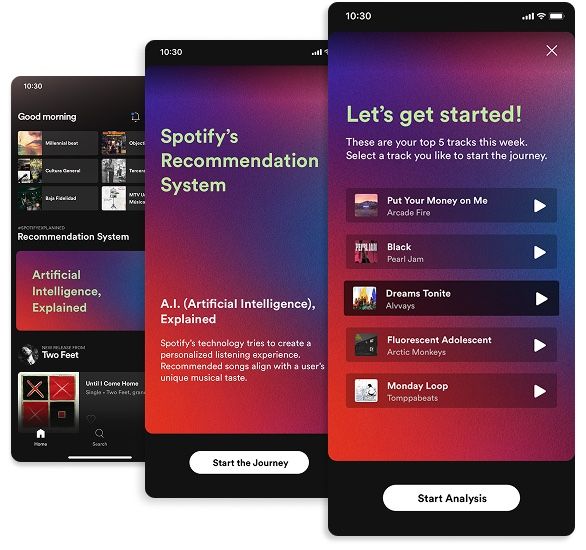
[ step 2 — internet browsing ]
Users pick an article related to their track or artist and highlight key words. This simulates how AI processes and extracts relevant information from text, helping it understand the context behind the music.
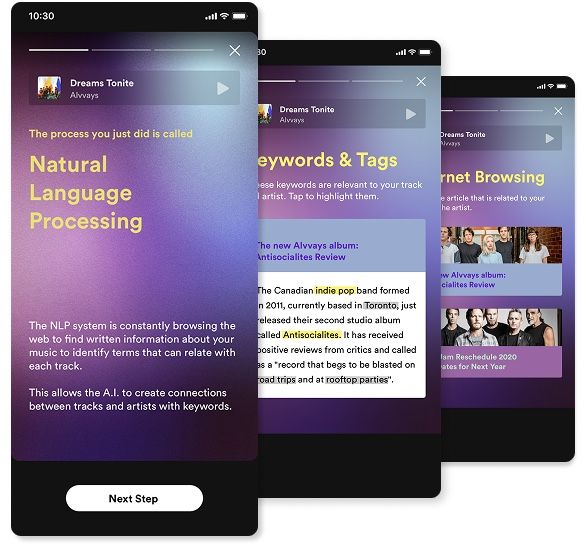
[ step 3 — genre & waveform ]
Users then select the genre of their track and compare waveforms to find the best match. This demonstrates how AI uses both genre and the unique audio fingerprint (waveform) to analyze and categorize songs.
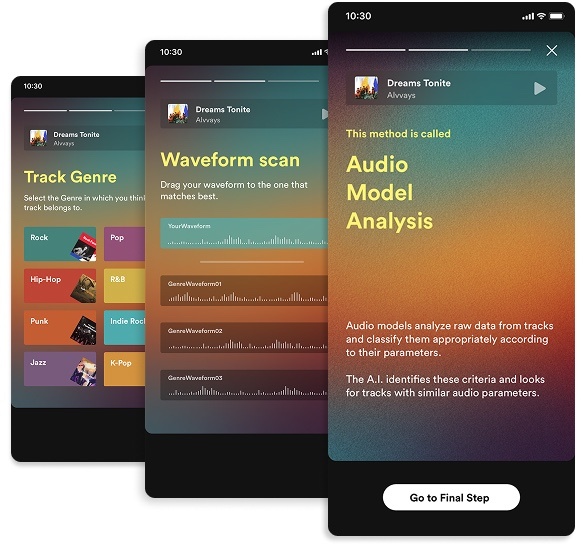
[ step 4 — playlist matching ]
Users guess which playlist their track belongs to and match artists featured in similar playlists. This is how AI groups music based on user behavior, using Collaborative Filtering to suggest similar songs.

[ the 30 second rule ]
After completing the previous steps, users listen to 30-second previews of songs and select the one that best matches their track. AI interprets that if a user listens longer, they likely enjoy the song.
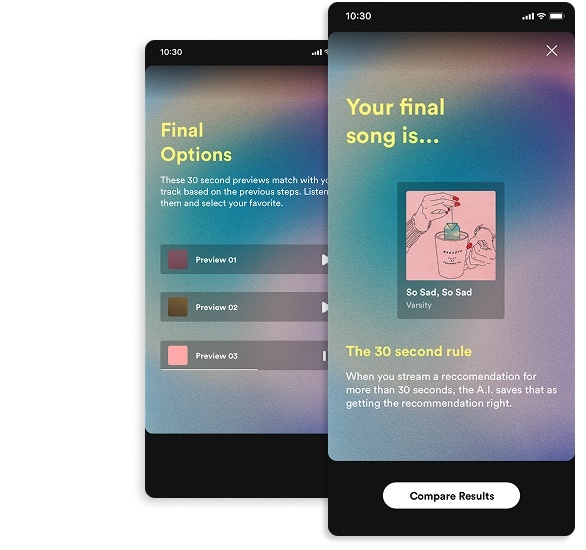
[ comparing the result ]
This shows how closely the AI's suggestion matches the user’s preference, highlighting the difference between human choices and machine predictions.
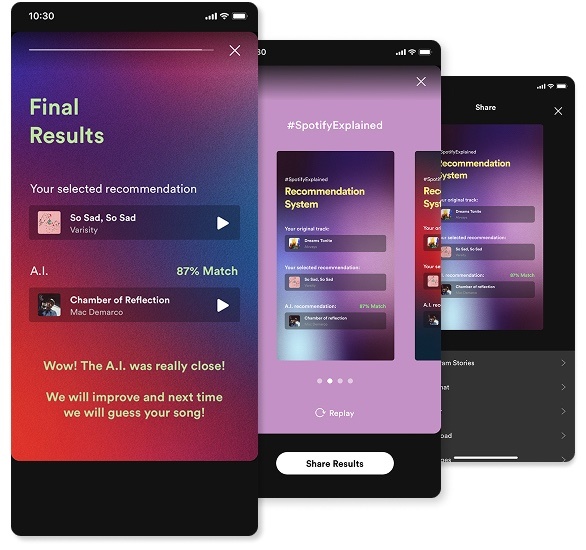
[ project goal ]
Simplify how machine learning and AI work in everyday tools like Spotify. By breaking down the process into easy-to-understand steps, the project demonstrates how AI can be an ally in our daily lives, while also emphasizing that human decisions always play a central role. We don’t have to keep up with the machine; the machine will always try to keep up with us.
design process —
[ context ]
What would happen if everyday tools, like Spotify, explained to users how they use AI in their daily lives? As a music lover, I wanted to answer that question by creating an interactive experience that breaks down how AI makes music recommendations.
[ inspiration ]
The inspiration for this project came from Spotify Wrapped and the seamless experience it offers users. Wrapped makes it easy for people to engage with their music data in a fun and personal way, and I wanted to create something similar that also explains the behind-the-scenes technology of AI.
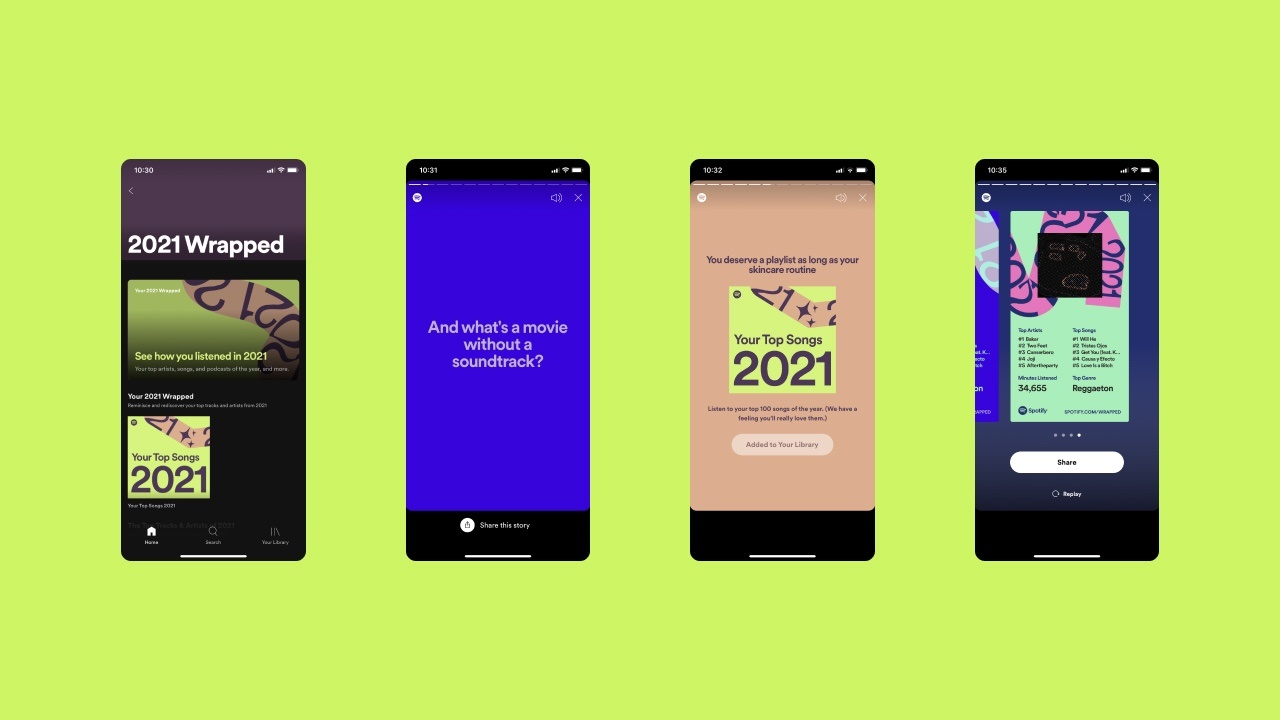
[ spotify’s recommendation model ]
I conducted research on how Spotify's recommendation AI model works. By diving into the algorithms and methods Spotify uses, I was able to design an experience that mirrors the process of how AI. I also simplified the concepts to make them accessible for users, ensuring the experience was both educational and engaging.
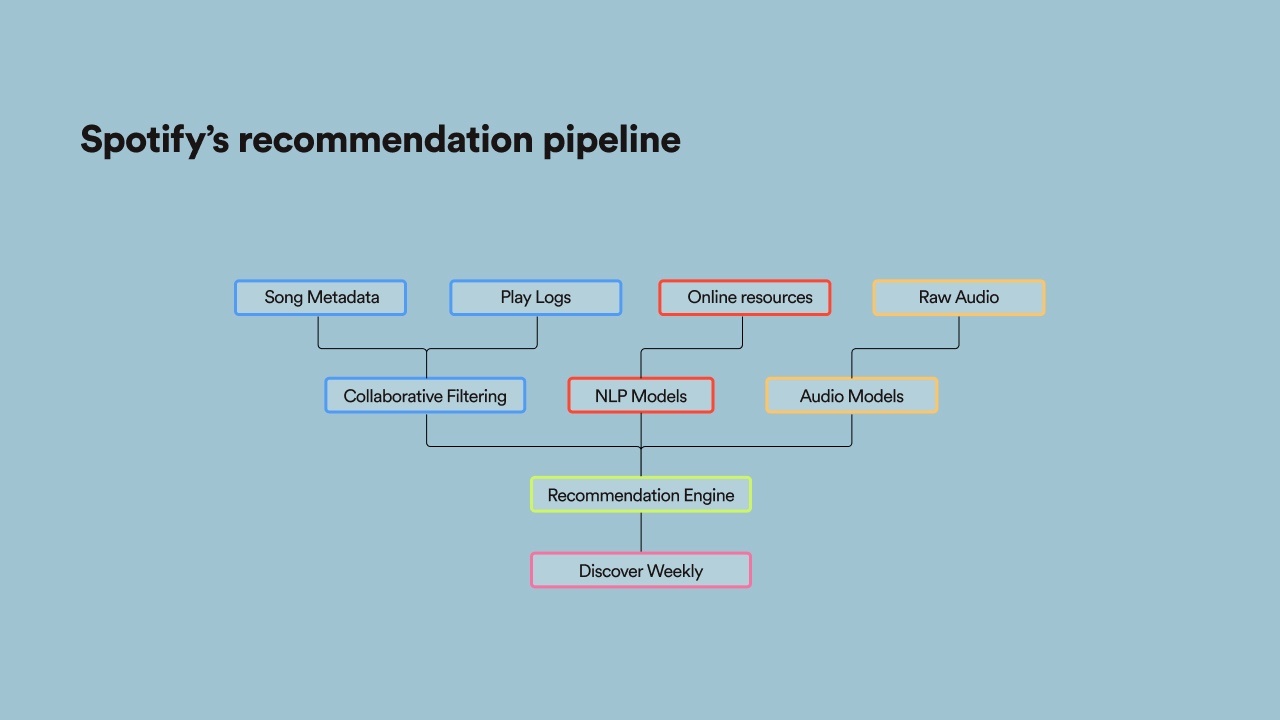
[ wireframes ]
Even though this project was fully conceptual, my inner UX designer wanted to ensure a smooth and intuitive flow. I started by creating wireframes and exploring different layouts to structure the experience in a way that felt natural for users.

[ visual language ]
I analyzed Spotify’s visual language to create a UI that felt cohesive with its existing design while exploring a futuristic look and feel, using dynamic gradients, and minimalistic elements. This approach ensured that the experience felt both familiar to Spotify users and visually aligned with the concept of artificial intelligence.

[ high-fi prototyping ]
I used Origami as the prototyping tool to create a high-fidelity prototype that felt as close to a real experience as possible. This was an opportunity to explore a new tool and develop new skills, pushing myself to expand my prototyping capabilities.
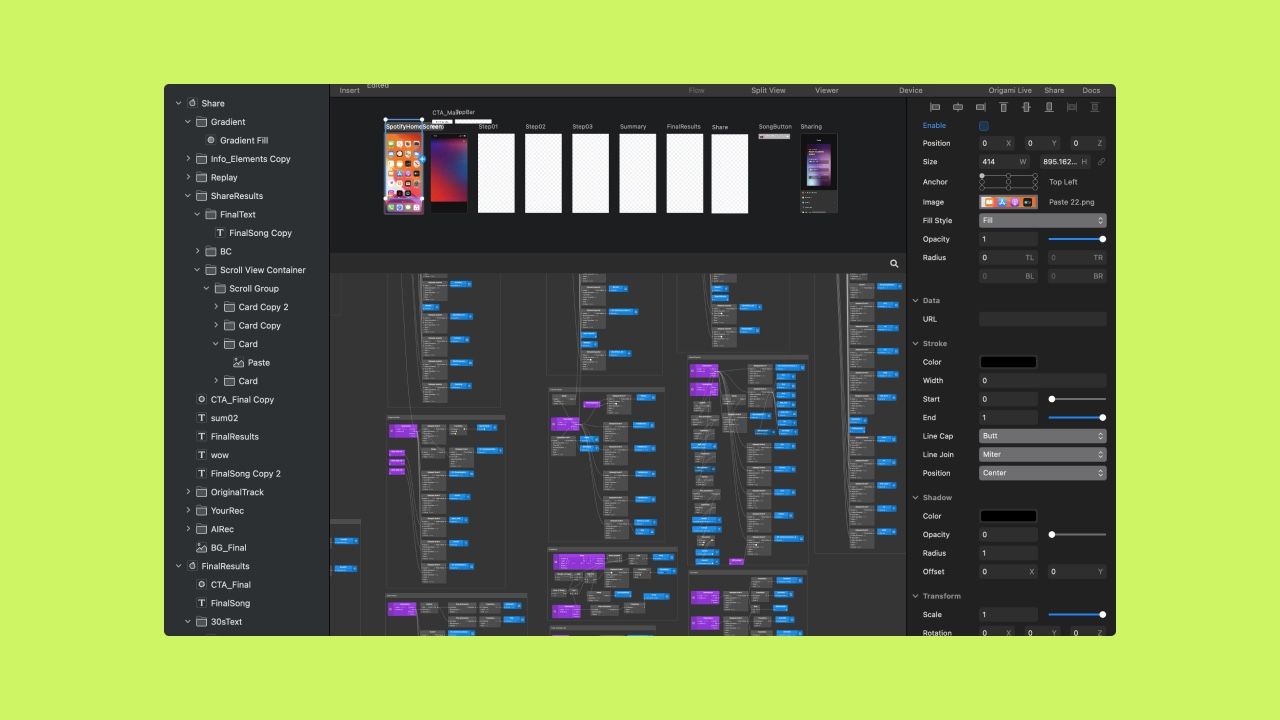
[ detail oriented ]
I wanted to create detailed animations and transitions to make the UI elements feel smooth and natural. By focusing on these details, I aimed to enhance the realism of the experience, making it feel like an actual interactive product rather than just a concept.
[ final thoughts ]
As a regular Spotify user, this project was a way for me to explore the AI behind a tool I use daily. It reinforced how AI can be a powerful and useful ally while reminding me that human choices still lead the way. Beyond the concept itself, I also pushed my design skills further by exploring a new prototyping tool, expanding my ability to create interactive experiences.
CIID, User Interface — 2022